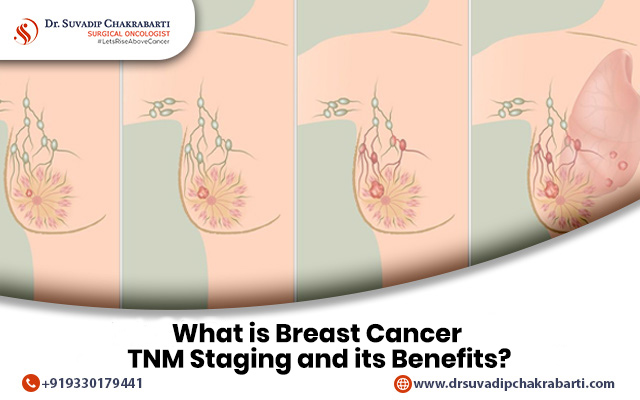Breast cancer staging refers to a crucial aspect of diagnosing and treating the disease. The TNM staging system is one of the most widely used frameworks for assessing the extent of breast cancer. It helps provide essential information that guides treatment decisions. Here’s an in-depth look at what breast cancer TNM staging entails and its benefits in the treatment process.
Understanding TNM Staging
The TNM staging system categorizes breast cancer based on three primary factors:
- Tumor (T): This component describes the size of the primary tumor and how it has invaded surrounding tissues.
It is classified into categories ranging from T0 (no sign of a primary tumor) to T4 (tumor of any size with extensive local invasion).
- Nodes (N): This factor assesses the extent of regional lymph node involvement.
It ranges from N0 (no regional lymph node involvement) to N3 (extensive lymph node involvement), with different subcategories indicating the number and location of affected nodes.
- Metastasis (M): This part indicates whether the cancer has spread to distant parts of the body.
M0 means no distant metastasis, while M1 signifies that the cancer has spread to distant organs.
Combining these factors, the TNM system provides the stage from 0 (in situ) to IV (advanced). For instance, Stage I represents early breast cancer, while Stage IV indicates metastatic disease.
Benefits of TNM Staging in Treatment
- Personalized Treatment Plans: TNM staging helps oncologists design treatments depending on the specific characteristics of the cancer.
For early-stage cancers (Stages 0 and I), treatment might focus on surgery and localized radiation.
For more advanced stages (Stages II-IV), a combination of surgery, chemotherapy, radiation and hormone therapy might be recommended.
By understanding the extent of the cancer, doctors can optimize the treatment approach for each individual patient.
- Predicting Prognosis: Breast cancer TNM staging provides valuable information about the likely course of the disease and the patient’s prognosis.
Generally, lower-stage cancers have a better prognosis and may require less aggressive treatment.
On the other hand, higher-stage cancers may necessitate more intensive therapies and close monitoring.
This information helps patients understand their outlook and make informed decisions about their care.
- Guiding Clinical Trials: Accurate staging is essential for patient eligibility in clinical trials.
Many clinical trials require specific stages of cancer to test new treatments or therapies.
By determining the precise stage, doctors can match patients with appropriate clinical trials that could offer additional treatment options.
- Evaluating Treatment Effectiveness: Staging is not a one-time assessment but an ongoing process.
Monitoring how the cancer responds to treatment through follow-up staging helps evaluate the effectiveness of the chosen therapies.
Adjustments to the treatment plan can be made based on how the cancer changes in response to treatment.
Hence, the breast cancer TNM staging plays a vital role in managing breast cancer by providing a detailed understanding of the disease’s extent.


